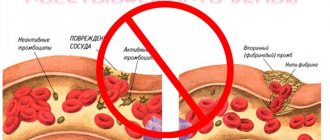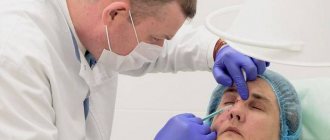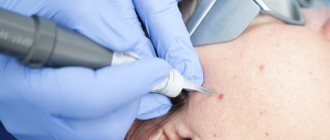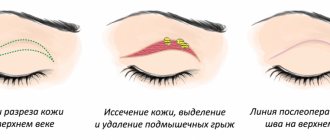Today, cosmetology and dermatology have a number of methods used to remove moles. The indication for removal is most often the risk of the formation degenerating into melanoma and the possibility of frequent injury. But sometimes removal is resorted to simply for aesthetic purposes.
What type of operation to use for the destruction of skin defects is decided by a dermatologist individually, depending on the nature of the formation, its size and the general health of the patient.
Small tumors are often recommended to be removed using the least traumatic method - electrocoagulation .
Description of the procedure
Electrocoagulation is an inexpensive modern method for quickly eliminating unwanted skin formations. It is carried out using a special device capable of generating an electric current of a given strength and frequency. It has several electrode attachments for performing manipulations of varying complexity.
When the device comes into contact with the skin, the following processes occur:
- High-frequency currents coagulate skin proteins at the point of contact with the electrode. As a result, the tissue is subjected to destruction, a targeted breakdown of bonds in the skin layers occurs, which minimizes relapses.
- High temperature provokes a pinpoint burn, separating pathological tissues from healthy ones.
- Nearby tissues experience biostimulation through their irritation. As a result, metabolic processes in them are accelerated, and healing occurs in the shortest possible time.
The use of electrocoagulation is widespread in cosmetology and gynecology. Similar procedures can be done even on mucous surfaces and in places where special care is required (eyelid, corner of the eye, etc.). The technique allows you to control the depth and accuracy of the effect on the skin area.
Pros and cons of the procedure
Electrocoagulation has its advantages :
- the operation takes place in a few minutes;
- removal of nevi occurs in one session;
- no scars;
- no bleeding occurs;
- the risk of infection is eliminated;
- You can remove the smallest papillomas.
When removed using this method, tissue fragments, if any remain, are sent for histology. The surgical technique allows such biomaterial to be left for research.
Electrocoagulation also has disadvantages :
- if the technique is incorrectly selected (frequency parameters, current strength) or when large moles are removed, scars may remain after electrocoagulation;
- Insufficiently long-term exposure of the mole to electric current can cause a relapse;
- improper care during the rehabilitation period can provoke pigmentation;
- if a person has increased sensitivity to pain, he may feel discomfort from electric shock;
- wounds do not heal as quickly as with radio wave therapy or laser mole removal. Complete healing requires at least 10 days.
Photo 1. After removal, not a trace remains of the mole. Source: Flickr (Brianna Gately)
Indications
The electrocoagulation procedure is indicated for the following pathologies:
- various types of papillomas and condylomas;
- moles;
- warts;
- punctate hemangiomas;
- rosacea (vascular network on the skin);
- postoperative scars, including keloids;
- Darier's disease;
- complicated acne;
- keratoses;
- genital polyps;
- cervical erosion;
- molluscum contagiosum, etc.
If there are papillomas and other formations on the skin, they should be removed immediately so that they do not turn into a dangerous form.
The price of the procedure depends on the size and shape of the formation. Hanging papillomas are removed quickly, while flat defects require much more time.
Comparison of methods
The methods are largely similar and it is impossible to say which is better to remove moles - laser or electrocoagulation. When choosing a procedure to get rid of skin defects, you need to weigh all the advantages and disadvantages, as well as the characteristics of the neoplasm and health status.
Disadvantages of electrocoagulation:
- due to less precision of instruments, healthy skin is damaged;
- final healing takes quite a long time;
- depressions may remain;
- Contraindicated for diabetes, blood diseases, infections and diabetes.
However, the disadvantages of this method are not that big. It is worth paying attention to the advantages, including the speed and possibility of carrying out the procedure on any part of the body, as well as safety and the absence of bleeding.
Laser advantages:
- painlessness and high speed of the procedure;
- absolute safety and absence of complications;
- due to the high precision of the beam, healthy tissues are not damaged;
- short rehabilitation;
- absence of any postoperative traces.
The disadvantages of the method include the need for high-quality, expensive equipment and a highly qualified specialist. The patient’s recovery depends on the exact implementation of the doctor’s recommendations. Depending on the type of tumor and the extent of the lesion, several sessions may be required.
The electrocoagulation procedure will cost from 250 to 2 thousand rubles, and laser therapy is more expensive - from 300 to 12 thousand rubles.
Which method to choose
Moscow clinics successfully use two methods of removing tumors: electrocoagulation and laser. Both methods allow for precise and effective removal. However, laser technology has a high cost.
Electrocoagulation has proven itself as an accessible method for removing formations protruding above the skin level. This method allows you to collect material for histological examination. In cases with flat skin defects (seborrheic keratosis, spider veins, etc.), it is preferable to choose laser technology.
For consultation, you should make an appointment with a dermatologist at the clinic. A specialist will help determine the optimal treatment method for a specific skin defect.
What is the essence of electrocoagulation?
There are cases when seemingly harmless formations develop into malignant tumors. This can happen due to the influence of many factors, among which a special place is occupied by the effect of sunlight on moles.
Content:
- What is the essence of electrocoagulation?
- About risk factors
- When is electrocoagulation of moles indicated and contraindicated?
- Pros and cons of the procedure
- Mole removal procedure
- Postoperative care
- Possible complications and consequences
Modern medicine has armed itself with various methods of combating unwanted growths that interfere with normal life. The safest treatment methods include electrocoagulation, surgery, laser destruction and radio wave removal. A simple and effective way to protect your own health is electrocoagulation of moles.
The technique is based on the use of high-frequency current discharges, which act as a surgical scalpel. These current discharges make small incisions in the area of the nevus. The tumor is cut off layer by layer.
The device that delivers current discharges is called an electrocoagulator. Electric current affects the desired areas of the skin and prevents bleeding (performing a cauterization function). This technique is considered effective, and with the most minimal risk of infection.
Contraindications
Electrocoagulation is a safe procedure with a negligible likelihood of complications.
However, there are a number of contraindications to the use of this method:
- oncology;
- allergy to anesthesia drugs;
- inflammatory process in the area of future removal;
- acute respiratory diseases;
- serious bleeding disorders;
- herpetic infection in the acute stage;
- severe immunodeficiency conditions;
- individual intolerance to current.
What common?
The main mechanism for removing tumors is the use of heat flows , which can be created either by electric current or laser radiation. Heat causes water in the tissues to evaporate, causing them to gradually burn. Both methods are characterized by a wide range of indications and can be recommended for the removal of pathological growths such as warts, papillomas, condylomas, atheromas, spider veins, keratomas, hemangiomas, etc.
Both procedures are quite painful because they involve a burn on the epidermis. To minimize discomfort, local anesthesia is indicated. The total duration of tumor removal is no more than 15 minutes, regardless of the chosen method. The consequences of such procedures are the same:
- In the first days, redness, swelling and slight pain on palpation of the wound may persist.
- At the site where the growth is removed, a dark wound with a characteristic crust appears, which should be regularly treated with antiseptics until complete healing.
- Since during the procedure the thermal effect still affects the healthy tissue surrounding the tumor, minor scars may subsequently appear in its place.
- There is still a risk of wound infection.
Advantages
Electrocoagulation eliminates the likelihood of bleeding and infection of the wound. The peculiarity of the procedure is that the skin, in contact with the electrode, is simultaneously cauterized and disinfected.
The main advantages of the electrocoagulation method:
- high accuracy and speed;
- minimal trauma;
- removal can be done in one go;
- no need to prepare for the procedure;
- after the crusts come off, there are no traces left on the skin;
- wounds heal well;
- relapses are rare;
- prevention of the spread of human papillomavirus infection;
- the removed material can be sent for histology;
- low cost of the procedure.
It is convenient for the patient that there is no need to go to the hospital for treatment. Everything goes quickly and you can return home immediately after the procedure.
What is tissue electrocoagulation?
Electric current has the following effects on living tissue:
- Thermal, that is, when heated to very high temperatures, a burn occurs;
- Biological - expressed in disruption of bioelectric processes and stimulation of tissue regeneration processes;
- Electrodynamic - represents the rupture of cells and tissues with steam. It is formed by heating lymph, blood and fluid located between tissues;
- Physico-chemical, that is, the destruction of physico-chemical bonds.
In what cases is this procedure indicated?
This method has long been used in gynecology and surgery. This temperature effect is used in many medical procedures:
Birthmark removal
- Tissue dissection;
- Stop bleeding;
- Cauterization of erosion on the cervix;
- Removal of condylomas and polyps that are located on the external genitalia.
In addition, electrocoagulation is used in cosmetology to remove papillomas, moles and other skin defects.
This method is also used for deleting:
- Dry calluses;
- Hemangiomas;
- Warts that are located on the soles of the feet;
- Rough hypertrophic scars;
- Birthmarks;
- Lipom;
- Ater;
- Tattoos;
- Cystic acne;
- Rosacea.
What do you need to know about the features of this procedure?
It can only be performed in specialized clinics and beauty salons, but in no case at home. Removal of any neoplasms with an electrocoagulator is carried out using inactive electrodes, which look like a lead plate.
Foil is used for the procedure. An inactive electrode is placed under the buttock, thigh, and other areas of the body. Using an active electrode in the form of a ball, loop or needle, various manipulations are performed.
The result of removal with an electrocoagulator
The electrodes are connected to a special device. It is capable of working in several modes. It depends on the waves it generates. Long waves with a cutting action are used to cut formations under the skin or on its surface, for example, warts and moles with a stalk. This method is also used to remove pathological tumors.
Related article:
What to do with inflamed papilloma?
Electrocoagulation of papillomas
A coagulator with short waves performs cauterization and destruction of papillomas, flat birthmarks, tattoos, and condylomas. Electrocoagulation usually takes only a few seconds.
The area with the pathological formation is treated with a special antiseptic solution. Local anesthesia is also used for pain relief for large diameter pathologies. For this, lidocaine or another local anesthetic is used.
Defects above the surface of the skin are removed with an electrode - a knife or a loop. Flat-type formations are removed using layer-by-layer cauterization with a flat electrode. Sometimes an electrode in the form of a ball is used.
When a depression appears after removal of the formation, its edges are smoothed and cauterized. Electrocoagulation can also remove formations of small diameter. This procedure is performed with a needle-shaped electrode.
What to do after the procedure is completed?
Important! After removing any tumors, a scab may form on the skin. It must be regularly treated with a weak solution of potassium permanganate.
It is forbidden to pick off the crust, as this leads to the appearance of a scar and suppuration. 5 days after the procedure, the wound will completely heal and the scab will fall off on its own. There will be no scars or marks on the skin.
Facial treatment after wart removal
Proper wound care is the prevention of any purulent complications. This can also help prevent the appearance of scars on the skin. Immediately after the procedure, slight pain or discomfort sometimes occurs in the wound. Treatment in this case is not required, since soon all these phenomena go away on their own.
Important! But in the first weeks after the procedure, you should not go to the solarium. It is also advisable to avoid direct sun exposure to the skin. When exposed to ultraviolet radiation on areas of the skin with a removed formation, active pigmentation may begin in them.
Pros of the procedure
This effect on skin formations, such as electrocoagulation, has advantages and disadvantages. Advantages of this method:
- Ease of procedure;
- High efficiency;
- Low cost;
- Low trauma;
- Safety;
- Removal of defects on any part of the body, so this method is suitable even for the face;
- No need for special patient preparation;
- Conducting the session on an outpatient basis;
- Simultaneity of the procedure;
- Visual control of the impact depth area;
- No bleeding;
- Avoiding infection of the wound.
The method also allows you to send the removed lesion for histological examination.
Related article:
How to remove papillomas at home yourself?
What are the disadvantages?
Current coagulation also has some disadvantages:
- Regular treatment of the damaged area;
- Need for local anesthesia;
- Risk of drawing nearby tissues into a thermal reaction;
- Prolonged pain;
- Possibility of complications.
After removal of a mole
Complications that may in some cases arise after the electrocoagulation procedure include:
- Suppuration of the wound if accidental or intentional rejection of the scab occurs ahead of time. This is also possible when an infection gets into the wound;
- Bleeding wound. This problem usually occurs with poor blood clotting;
- Formation of an area of depigmentation that looks like a light spot on the skin. But gradually he becomes a normal skin color;
- A barely noticeable scar may also appear. This is due to the patient’s predisposition to the proliferation of connective tissue when the skin is damaged.
Contraindications
Important! This procedure also has contraindications. It is prohibited for people with diabetes, epilepsy and other mental disorders, as well as those suspected of having malignant neoplasms.
Electrocoagulation to remove defects on the skin cannot be used for infectious diseases in the acute stage, for herpes, and blood diseases. It is prohibited when:
- Presence of a pacemaker;
- Individual hypersensitivity to electrical procedures;
- Allergic reactions to drugs for local anesthesia;
- During pregnancy;
- Exacerbation of any chronic diseases.
Therefore, before electrocoagulation, it is advisable to consult a doctor.
Progress
The procedure is performed by a qualified doctor in a clinical setting. Only in this case can a positive outcome be expected.
The sequence of electrocoagulation:
- The skin area is disinfected and dried with a sterile cloth.
- If the formation is small, then anesthesia is not used. For large areas of work, local anesthesia is performed.
- The tumor is removed with one of the attachments - an electric knife or a loop. If a papilloma is removed, its head is grabbed with tweezers, and the leg is quickly cauterized.
- The duration of the manipulation depends on the specifics of the skin defect - from a few seconds (papilloma 2-3 mm) to 15 minutes. If there are many formations, then the treatment can be divided into several procedures.
- A brown crust remains at the site of electrode impact. It is treated with a solution of potassium permanganate.
- After peeling off the crust, a pink spot remains, which then becomes equal in color to the rest of the skin.
If necessary, the removed tissue is sent to the laboratory for histological examination. This is an important step when removing any moles (nevi), papillomas and other suspicious growths. It is important to diagnose the presence of malignant cells in time.
Mole removal technique
The procedure takes 15 - 30 minutes and consists of the following manipulations:
- the skin and area of the nevus are treated with an antiseptic solution;
- an injection of an anesthetic drug is given (if these are warts or very small formations, anesthesia can be in the form of a cream);
- a specialist burns out a mole or papilloma with an electrode;
- if necessary, stitches are applied to the wound;
- if the formation is small, the remaining stain is smeared with a solution of potassium permanganate.
The type of electrode used to remove a mole is selected according to its type and size. No pain is felt during the manipulation. The maximum that the patient can feel is the touch of the electrode and tingling.
To learn how electrocoagulation of moles is performed, watch this video:
Skin care after the procedure
After electrocoagulation, the doctor will prescribe an individual care regimen for the removal site. But we can give general recommendations:
- For the first 7-12 days, the wound is covered with a crust that cannot be removed. Underneath it, the process of restoration of the epidermis occurs. During this period, you should not apply cosmetics or wash the area.
- The crust is usually treated with a 5% solution of potassium permanganate.
- The skin area should be protected from friction, injury and sunlight. It is recommended to use sunscreen with a high SPF factor (at any time of the year).
Reviews
Tatyana: I was worried about two raised moles on my neck and above my eyebrow. I showed them to a dermatologist, she advised me to remove them so as not to worry too much. We chose the electrocoagulation method; the low cost and low likelihood of complications were very attractive. A month later, pink spots remained in place of the moles; over time, a mark remained visible only to me above the eyebrow, but on the neck the scar was a little more pronounced. The doctor warned that this could be the result. Removal of formations on the face is least noticeable; on the rest of the body, in order to avoid scars, the use of special healing gels is recommended.
Christina: I was very worried about the papilloma on the eyelid, located right under the eyelashes. It was an unpleasant, growing thing that definitely had to be removed. After all, this is a place that you constantly touch, and this is dangerous. When I came for electrocoagulation, the doctor immediately warned that we would do it without anesthesia. The procedure lasted 5 minutes, it was really painful, tears rolled down in hail and the smell of burning skin was annoying. For 5 days I treated the papilloma mark with alcohol, as a result there was a pink spot there for some time, but now nothing is visible at all. I am very pleased with the procedure and the result!
Veronica: I had a mole on my nose, it was convex and quite large. I got used to it throughout my life, it didn’t bother me. But people’s tactlessness and worries that she could degenerate led me to electrocoagulation. The most painful part of the procedure was the anesthetic injection. Otherwise, it’s quick and painless. In addition, the doctor also suggested getting rid of rosacea. I was very pleased with the price, I didn’t expect it to be so cheap. I had electrocoagulation done 3 months ago, the trace is still there, but barely noticeable.
Possible complications
Complications after electrocoagulation are extremely rare. There is a risk of a reaction to anesthetic drugs. Problems can also arise if wound care recommendations are not followed. If you tear off the crust (scab) ahead of time, there is a possibility of infection getting into it, followed by suppuration. It can also cause scar formation. Normally, a scar on the skin remains only when the formation has a deep root. In other cases, everything ends with the skin healing without any negative consequences.
Advantages and disadvantages of the removal method
The destructive technique is a type of surgical intervention, but the growth is not cut off with a scalpel, but is cauterized with a high-frequency current.
Diathermocoagulation is carried out with a device equipped with an electrode. The rheostat is responsible for heating. The doctor brings a heated loop to the pathological area and applies high temperature, causing protein coagulation. According to experts, the method is a revolutionary breakthrough in medicine. Helps remove unpleasant, dangerous formations on the skin and internal organs.
Advantages:
- the excised material is subject to histology;
- the risk of relapse is minimized;
- prevention of infection;
- absence of traces of cauterization due to preservation of the integrity of surrounding healthy tissues;
- the possibility of performing surgery on the skin and body cavities;
- safety for the patient - this is acceptable in all cases;
- speed of the procedure;
- the coagulator is adjustable according to the depth of exposure, allowing you to remove moles of different sizes;
- no bleeding. During the processing process, the vessels are simultaneously sealed.
The only drawback is that there is a risk of scar tissue forming at the excision site.
This happens rarely and is mainly due to poor quality work, individual characteristics of the body, a tendency to keloid scars, as well as violation of the rules for care during the rehabilitation period.










